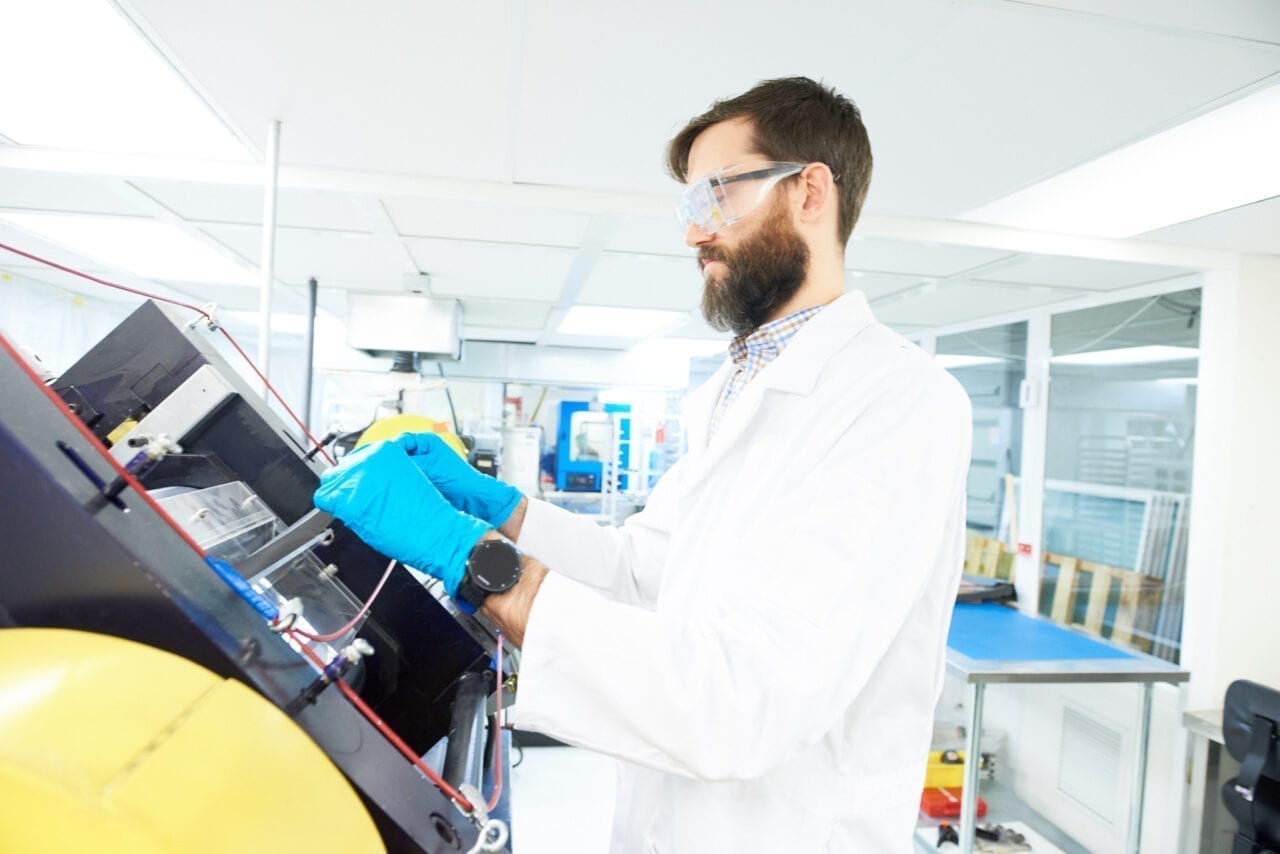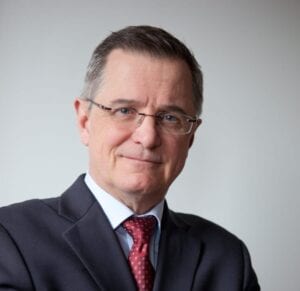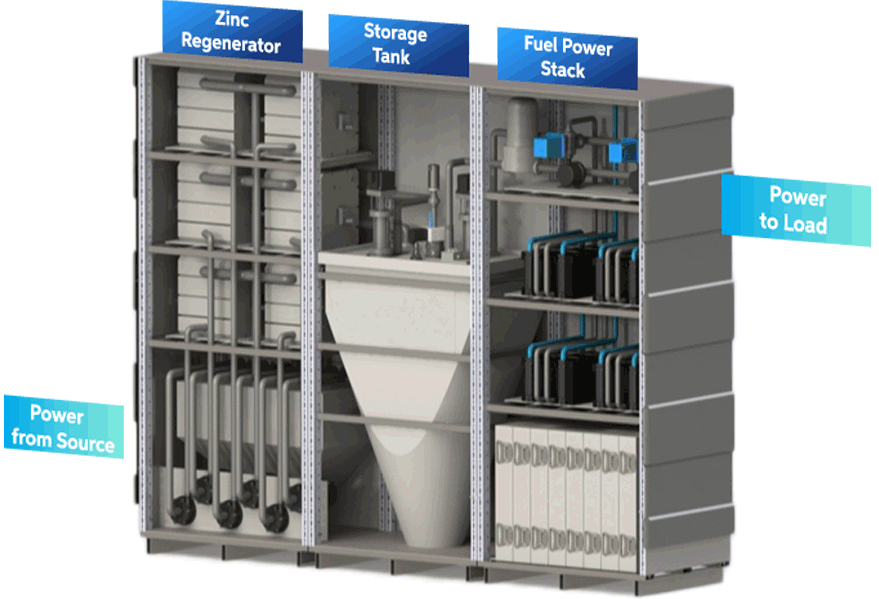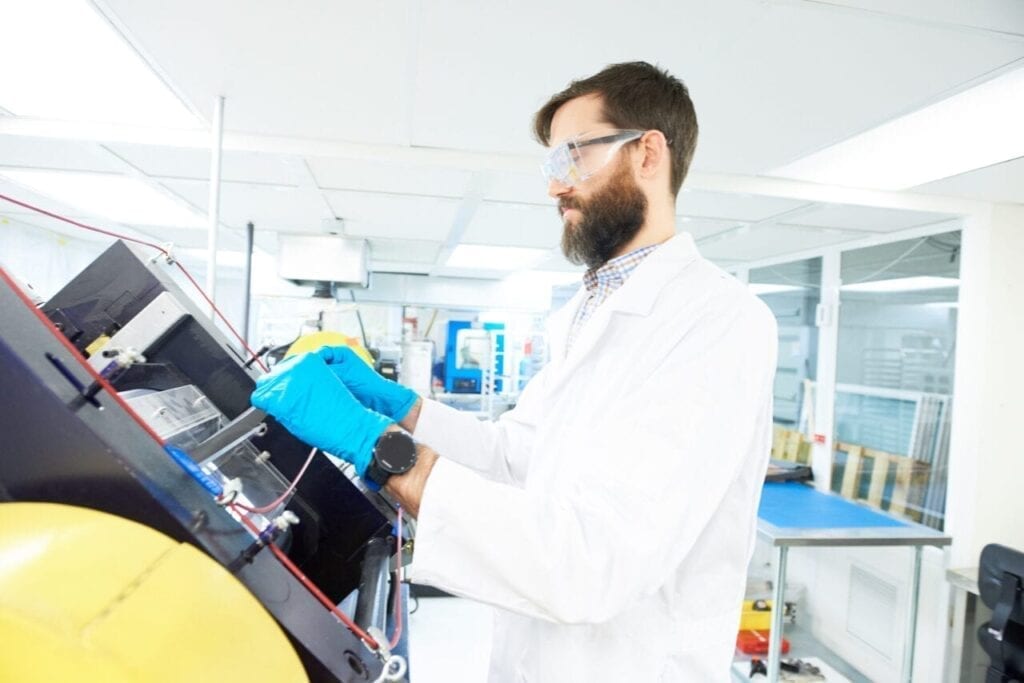The POWER Interview: Zinc-Air Batteries Make Strides
The post The POWER Interview: Zinc-Air Batteries Make Strides appeared first on POWER Magazine.

Energy storage already is transforming power generation, and most industry analysts say the potential for storage is limited only by its technology. As batteries improve-and certainly as they become more durable, safer, and cost-effective to install-energy storage will continue to be deployed in more places.
Zinc-air batteries have long been used in a variety of devices. They are lightweight, compact, and made of less-flammable materials than other batteries. Researchers have been working on new zinc-air designs that can be used for many applications, including in microgrids, commercial and industrial buildings, and even residential settings. It's being done with an eye toward providing a low-cost, long-duration energy storage system that can be more sustainable and also support intermittent renewable energy.
Zinc8 Energy Solutions, a Canadian battery manufacturer based in Vancouver, British Columbia, has developed a technology that, as the company said, completely decouples the linkage between energy and power." The company said that, Unlike lithium-ion technology, which requires new stacks in order to scale ... scaling Zinc8's technology can be accomplished by simply increasing the size of the fuel tank and quantity of recharged zinc fuel."
 Ron MacDonald
Ron MacDonaldRon MacDonald, president and CEO of Zinc8 Energy Solutions, provided POWER with insight into his company's technology and its advantages when it comes to energy storage installations.
POWER: What is the advantage of zinc air as a fuel in a battery?
MacDonald: Among the many chemistries utilized for the construction of high-capacitybatteries, the zinc-air combination has long been recognized as highly advantageous due to its inherent safety, high energy density and the abundance of its raw materials. The fuel (zinc and air) is abundant,easilyaccessible,andvery inexpensive. Zinc as a fuel has an advantage over other metals due to its abundance, low cost, environmental compatibility, and ease of storage and handling.
POWER: Where is your technology currently installed?
MacDonald: Zinc8 Energy Solutions delivered our first battery to site at a private residence in Surrey, British Columbia, in December of 2020. This first test site is a net-zero home where our 40 kW/160 kWh (4-hour duration) Zinc-Air ESS is integrated with a solar PV system. We are also working with theNew York Power Authority (NYPA) on a projectwith a contribution of $2.55millionfrom NYPA todeployfirst-use of zinc-air ESSin New York State, set for delivery in 2022. As well, Zinc8 and our private sector Digital Energy were selected and financially supported ($600,000CAD)by NYSERDA (New York State Energy Research and Development Authority) todeployzinc-air ESS at a CHP (combined heat and power) plant in Brooklyn, New York, in 2022.
 A cutaway look at the Zinc Air Regenerative Fuel Cell System. Courtesy: Zinc8 Energy Solutions
A cutaway look at the Zinc Air Regenerative Fuel Cell System. Courtesy: Zinc8 Energy SolutionsPOWER: How important is this technology to developing countries?
MacDonald: Reaching universal access to electricity is a priority for many governments in developing countries. According to the World Bank, the total number of people requiring access to electricity by 2030 is estimated to be 1.22 billion. In most of the countries with the fastest gains in electrification between 2010 and 2018-including Bangladesh, Cambodia, Kenya, Myanmar, Nepal, Rwanda, and Tanzania-national electrification strategies included microgrid investments. The typical microgrid is grid-interconnection ready; incorporates energy-efficient appliances and uses remote management systems with the latest solar-plus-storage technologies. This way, the electric utilities in developing countries can leapfrog centralized grid investments and allocate resources in low-cost, reliable microgrids.
POWER: How does the cost of a zinc-air battery compare to more traditional battery technology?
MacDonald: This sizing flexibility, combined withdeep cycling capabilitiesand durability, results in a levelized cost of storage (LCOS) orders of magnitude lower than conventional batteries for long-duration energy storage. In addition, by decoupling the linkage between power and energy, and using low-cost, abundant materials, our system is capable of reducing its capital cost dramatically for longer-duration applications, making us currently the lowest cost per kWh in the 8 hours+ storage market, other than pumped hydro which is geographicallydependent.
Storing zinc particles in a storage tank away from the zinc regenerator allows the true decoupling of energy and power. Unlike most energy storage systems where their maximum energy capacity is a function of their respective electrode area, which is both difficult and costly to scale, Zinc8's maximum energy capacity is limited only by the tank size, one of the most inexpensive components of the system. Our system's unique modularity allows to size charging, discharging, and energy capacity rates independently from each other. The cost of a specific Zinc8 battery solution is dependent on its configuration, meaning the relationship between the power and energy ratings, or the energy-to-power ratio. The energy-to- power ratio is also referred as the energy storage duration of the battery, and it is expressed in hours.
POWER: What are the environmental advantages of your technology?
MacDonald: Zinc8's long-duration Zinc-Air ESS is built on two main pillars: 1) full decarbonization of the electric grid as an enabling technology, and 2) maintaining the grid's reliability and operability. Few places around the world have achieved 100% renewable energy generation due to a fortunate mix of hydro and geothermal resources. Solar and wind show the highest promise for decarbonization, but such resources would have to rely on fossil fuels for a dependable electric grid, due to their intermittencies. To maintain the highest reliability, the electric grid has to rely on fossil-fuel-based peaking plants. Highest level of fossil-fuel based, peaking capacity replacement is only possible with low-cost, long-duration energy storage paired with solar or other renewables.
The enabling long-duration technology can therefore offer significant environmental benefits, advance the nation's carbon reduction and clean energy goals, as well as benefit remote populations and communities such as environmental justice areas, which have been historically disadvantaged in terms of electricity supply reliability and pollution. Zinc8 has kept this as one of its main pillars for its technology development. Zinc8's technology uses only non-rare earth elements and widely-available materials, which compose mainly of zinc, magnesium, and common metals and plastics. All materials in Zinc8's energy storage system can be 100% recycled or refurbished. The electrolyte and zinc have no lifetime. After any system decommissioning, they can be refurbished for new system installations.
 A technician works in the Zinc8 Energy Solutions laboratory. The company has raised approximately $85 million (CAD) since 2002. The company currently holds 21 U.S. patents, with three pending approval. The Zinc8 energy storage system does not require costly thermal suppression or special containment structures, allowing deployment both outdoors and indoors, even in highly populated areas such as New York City. The company recently won the NYC Department of Buildings Innovation Challenge." Courtesy: Zinc8 Energy Solutions
A technician works in the Zinc8 Energy Solutions laboratory. The company has raised approximately $85 million (CAD) since 2002. The company currently holds 21 U.S. patents, with three pending approval. The Zinc8 energy storage system does not require costly thermal suppression or special containment structures, allowing deployment both outdoors and indoors, even in highly populated areas such as New York City. The company recently won the NYC Department of Buildings Innovation Challenge." Courtesy: Zinc8 Energy Solutions POWER: What are the safety advantages of your technology?
MacDonald: Zinc8's zinc-based batteries are inherently one of the safest battery technologies available. (Our system's) chemistry is inherently benign, non-flammable and non-toxic. The Zinc8 ESS has no thermal runaway as experienced by other storage technologies, such as lithium-ion batteries. It doesn't require costly thermal suppression or special containment structures, allowing deployment both outdoors and (for) safe indoor installations.
POWER: Long-duration energy storage-how does your technology promote and provide that?
MacDonald: (Our) primary focus is long-duration energy storage. We are active in many forums from projects and markets' perspective where long-duration energy storage is the focus, such as the Long Duration Energy Storage Alliance of California. As well, we are active on many committees where it is our goal to advance long-duration storage technologies with governments, utilities, and certification bodies. Zinc8 can harness the full potential of zinc-based battery chemistry to position itself in a blue-ocean market due to its lower cost and design flexibility. The system's modularity allows Zinc8 to successfully compete in the distributed long-duration energy storage space where other low-cost, long-duration storage technologies are unable to compete due to economies of scale (technologies such as compressed-air, gravitational, pumped-hydro, or liquid air) or simply geographical constraints.
POWER: Can you talk about the scalability of your technology?
MacDonald: Zinc8's battery technology is uniquely modular and flexible in terms of sizing. All of (our) subsystems (i.e., fuel tank, fuel cell stack, and zinc regeneration stack) are designed considering large-scale production, which reduces the scalability risk in terms of manufacturing capacity and project sizing. Zinc-air batteries use materials that are readily available worldwide and abundant, which makes them affordable and accessible. The cost of raw materials per kWh for zinc-air chemistry is seven times cheaper than the one from typical lithium-ion (li-ion) batteries, and 13 times cheaper than the one from the most common flow battery technologies: vanadium redox. The abundance of zinc and potash, which are the main chemical components of zinc-air batteries, have allowed historically stable prices.
POWER: Your company touts the use of its technology in remote microgrids. Considering the need to provide power in developing countries, often areas far from the traditional grid, and the increasing need for backup power (and increased reliability and resiliency), how are you positioning your technology versus the many others currently being used in microgrids?
MacDonald: The deployment of Zinc8's long-duration energy storage technology in remote microgrids can offer significant environmental benefits, helping to advance any community's carbon reduction and clean energy goals, including that of remote populations, communities and remote microgrids, which have been historically disadvantaged in terms of electricity supply reliability and pollution. Our long duration zinc-air storage technology allows multi-day energy supply to mitigate risks associated with renewable energy unpredictability due to weather conditions. As well, our technology can deliver lower energy costs. Long-duration energy storage allows renewable energy baseload generation, which is proven to be the lowest-cost energy source. Also, the Zinc8 ESS can help deliver significant reduction in GHG (greenhouse gas) emissions, reducing or even eliminating reliance of fossil-fuel energy sources.
-Darrell Proctor is associate editor for POWER (@POWERmagazine).
The post The POWER Interview: Zinc-Air Batteries Make Strides appeared first on POWER Magazine.